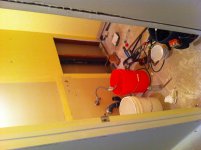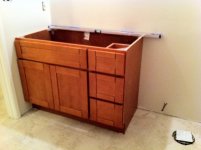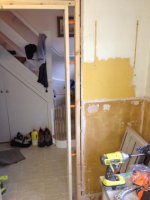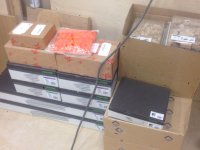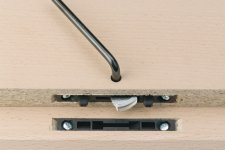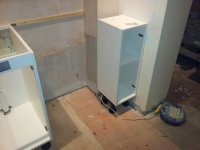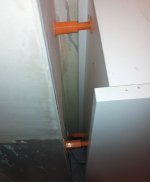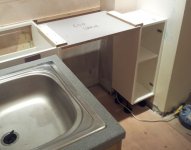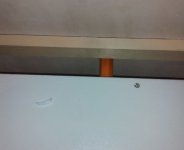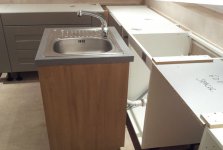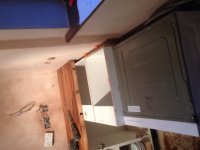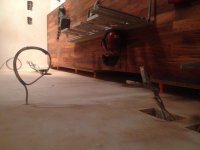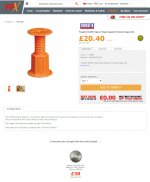Here's some pics of the first kitchen cabinets I have fixed using Space Plugs. The cabinets have solid tops and I was worried that the plugs were going to be awkward to fit having one hand in the cabinet and and one hand on top of it at the same time so to speak. I won't bore you with details but the short version is that it was easier than falling off a log. I also had batten behind the units to support the granite around the sink and hob cut-out. I thought that would complicate access for fitting too, again it would be harder to fall off a log.
[attachimg=1]
So here's my fist ever Space Plug fitted and like all new methods a lot of things became apparent once I had used them. Peter has pointed out a lot in his video and part of this kitchen had stud walls. Space Plugs certainly made life easier and I have never been happy trying to get a good fixing in plasterboard/drywall when drilling at an angle for L Brackets.
They also provide control of the cabinet levelling in another axis. The idea is that you use the plugs once the cabinets are in their final position and level but is very useful to have a fixing that is micro adjustable after fixing. Using L brackets the only way to adjust if necessary after fixing is to use packers which I have never found satisfactory. I also found that there is still scope for height adjustment after the Space Plug is fitted by perhaps a few mm. It does make the plug slightly skewed but it doesn't affect the strength or integrity of the fixing.
[attachimg=2]
I had one awkward cabinet to install, a stand alone 260w x 300d next to an integrated dishwasher space. I have a 600 spacer I use to help align appliance gaps and I screw it to the cabinet tops whilst I'm aligning. However with a cabinet like this I'm never sure that it will stay in perfect alignment after I have fixed it and removed the spacer.
[attachimg=3]
Well it turns out that with Space Plugs it wasn't a problem. Everybody that I have spoken to that uses Space Plugs says that you instantly find uses for them solving all sorts of problems once you actually have them in your toolbox. I used 3 plugs behind this cabinet with the middle screw hidden behind the centre shelf. It gave me absolute control over the positioning of the cabinet and made an awkward job really easy.
[attachimg=4]
The real proof is what happens when the spacer is removed. I unscrewed it and removed and the cabinet didn't move at all, it was absolutely rock solid. If I did need to adjust it Space Plugs would have made that very simple. Whilst it was in position I piloted two holes behind the hinges and removed the cabinet. This enabled me to drill and plug to the adjacent wall with normal screws and plugs. I then refixed using the Space Plugs and put two screws in behind the hinges. These last two screws weren't really necessary as the Space Plugs were enough to hold the cabinet but I always like a belt and braces solution.
[attachimg=5]
I would have to say that I would highly recommend that people try these out, they have loads of uses beyond fixing kitchen cabinets. I thought they were a good idea before I tried them and after trying them I think they are a brilliant idea and I will be ordering some more.
I see my initial Space Plug experience as very similar to owning my 1st TS55. I spent 3 years agonising over whether or not I would buy a TS55. I wanted one but couldn't justify the expense when I already had a cheaper workable solution in the form of a straight edge, a skill saw and a router to clean up the cuts. That's what I initially thought about Space Plugs too and I felt I had a cheaper workable solution in L brackets. If you are an SPD (Space Plug Doubter), as I once was, I recommend that you buy a 10 pack of each size. I would be absolutely gobsmacked if you don't have a Space Plug epiphany and become fully converted. You too will soon be telling all your work colleagues of all the innovative uses you have found for them.
Space Plug Online Shop
